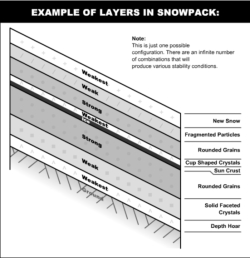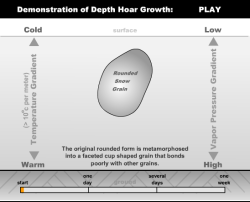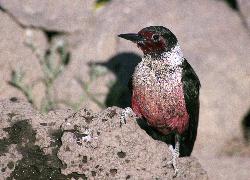
Two American Robins and a
Northern Flicker Drinking
Copyright © 2012 Linda Kervin
Three American Robins Drinking
Copyright © 2012 Linda Kervin
No songbird can be led to water, and you certainly cannot make them drink. Give them a birdbath, though, and many birds will drink and bathe with gusto, especially here in the arid West. As a yard ornament the idea is not so old; the word “birdbath” was first coined in the Gilded Age. At our birdbath, robins daily crowd the rim, as many as six at a time, alternately bobbing and thoughtfully swallowing. Few birds can suck in water with their beak immersed. Instead, they lift their head with a beak full of water which they drink down in a few gulps. The gray Townsend’s solitaire, another regular visitor, perhaps needs to wash down its winter diet of dry, tangy juniper berries.
Birds like to bathe, even in winter. Just why they bathe is not so obvious. Cleaning their insulative layer of down may keep it fluffy to trap maximum heat. After bathing, birds often nibble their flight feathers. This preening removes dirt, feather detritus and parasites, while realigning each feather’s barbs so that they lock together for flight. Feathers repel water not by oils, but through their fine structure. Some game birds, such as quail, take dust baths, squatting in a shallow dirt scrape to ruffle loose dust through their feathers. When quail were experimentally denied dust baths, their plumage became greasy and disheveled. Bathed, preened birds are dapper.
So what features make a good birdbath? It should be shallow, just an inch or two deep and placed two feet or more above the ground to thwart terrestrial predators. A nearby preening perch is helpful. The bath should be convenient to refill, both because bathing birds splash a lot, and also because changing the water frequently deters disease transmission. Our birdbath mounts to our deck railing and has a low wattage heating element that prevents freezing. If you are already feeding birds, consider adding a birdbath. The exuberance of a bathing bird is a joy to behold.
This is Linda Kervin for Bridgerland Audubon Society.
Credits:
Graphics: Courtesy and Copyright 2012 Linda Kervin, Bridgerland Audubon Society
Text: Jim Cane, Bridgerland Audubon Society
Additional Reading:
Bird Notes from Sapsucker Woods, Cornell Lab of Ornithology, 2004, https://www.birds.cornell.edu/pfw/Members/BirdNote09–ProvideWater.pdf
Providing Water for Birds, Great Backyard Bird Count, Cornell Lab of Ornithology, https://www.birds.cornell.edu/bbimages/gbbc-email/ProvidingWater.pdf








